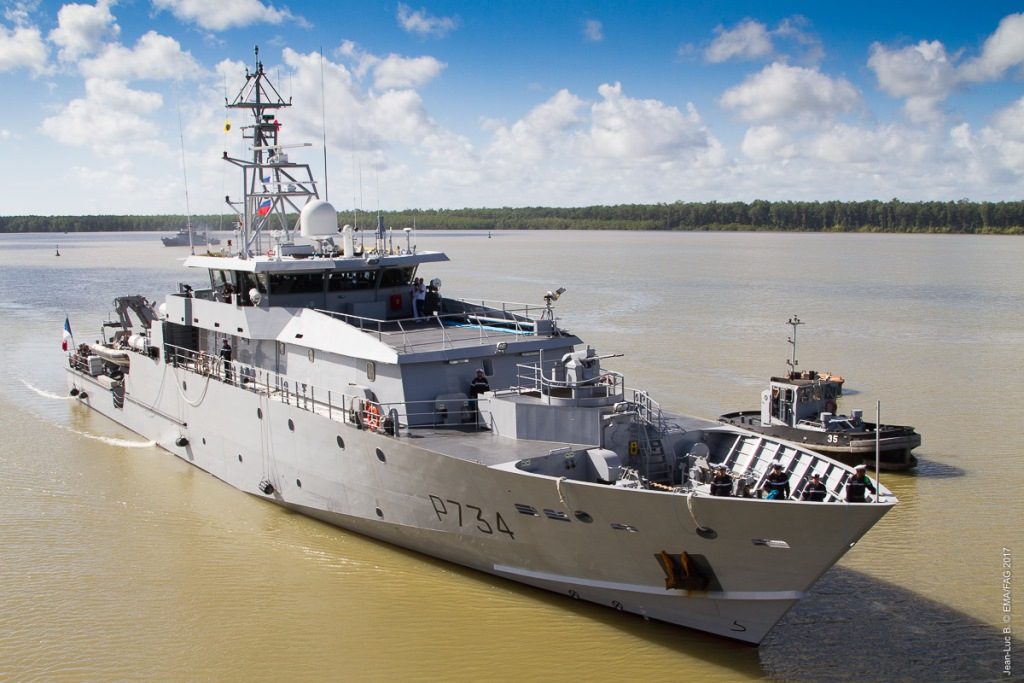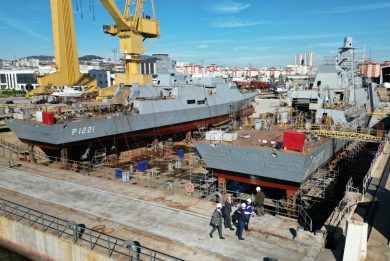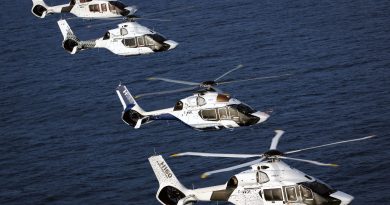
French MoD ordered six OPVs for national overseas territories
By Luca Peruzzi
The President of the French Republic, Emmanuel Macron, announced the procurement of six new OPVs for national overseas territories during the Les Assises de l’économie de la mer maritime economy symposium that took place in Montpellier on 3 December.
According to the French Armed Forces Ministry statement, the announcement follows the Ministerial Investment Committee of 19 November, when the Minister Florence Parly decided to launch the Patrouilleur d’Outre Mer (POM or Overseas Patrol Vessel) programme, managed by the DGA, the French armaments procurement agency.
Thaim of the programme is to replace the older generation of offshore patrol and other surveillance vessels stationed in the French overseas territories of New Caledonia, French Polynesia and Reunion Island, for the surveillance of their respective maritime areas.
In accordance with the strategic goals of the 2019-2025 military program law, this procurement reinforces the protection of French maritime territories, and advances the renewal of this capability by two years. The six OPMs will be delivered between 2022 and 2025.
In a context of increasing threats to fishing resources, biodiversity and international rules of the law of the sea, France intends to fully exercise its sovereignty and responsibilities both around the country and in its overseas territories.

The renewal of naval assets for the surveillance of French overseas maritime territories began with the delivery of three 61 meters patrol vessels between 2017 and 2019 by an industrial team led by the Socarenam shipbuilding company and including the CNN MCO company, to protect the Antilles and Guiana. Called initially PLG (Patrouilleur Léger Guyanais) and then PGA (Patrouilleur Antilles Guyane), these patrol vessels have been specifically designed to operate in these territories including internal waters such as the Kourou (Guyane) river. With a displacement of 760 tonnes, a length and a beam of respectively 61 and 9,5 meters, the PGAs have accommodations for 38 persons including 24 crew members and are able to reach a maximum speed of 21 knots. Capable to deploy two 7.5 meters fast intervention boats, launched by lateral davit and stern ramp, as well as equipped with a fire monitor, the PGAs are armed with one 20 mm remote-controlled gun and two 12,7 mm machine guns.
The patrol fleet renewal programme is continuing today with the announced procurement of six Patrouilleur d’Outre Mer (PMO or Overseas Patrol Vessel) to be based in the Pacific Ocean and Indian Ocean overseas territories.
According to the French MoD press statement, the new POM platforms are designed to carry out missions of sovereignty and protection in the France’s Exclusive Economic Zones (EEZs), intervention against marine pollution and in favour of the environment, as well as rescue and assistance, with the support of a shipborne operated unmanned air system.
No further details have been released on the selected design and shipbuilder, but the press statement includes an image resembling a larger PGA platform with RHIBs at stern and lateral launch and recovery stations, a flight deck and an open deck area for a standard container and crane for equipment movement. After the announcement, the French Le Marin publication confirmed that the Socarenam will be the shipbuilder, followed by national newspapers.
According to the request for information (RFI) for the procurement of the six offshore patrol vessels for the French Navy (Marine Nationale), issued on August 2018 by the DGA, the POMs should have a steel or aluminum hull, a length of about 70 meters, with a draft of less than (or equal to) 3.8 meters, and a maximum speed of at least 22 knots. The POMs will be adapted to the climatic conditions of the areas where they will operate, will have a crew of about 35 sailors, and will be able to accommodate up to 18 additional personnel. The requirements include the ability to operate divers. The POMs will have good maneuverability and seaworthiness capabilities and should have accommodations for a rotary wing unmanned aerial vehicle of about 700 kg (including storage under shelter, maintenance and implementation with associated equipment for assistance during the operations) as well as two RHIBs of about 8 meters. The command and control suite will include a tactical situation visualization system as well as civilian and military communications (in particular HF and SATCOM). The RfI required an endurance of approximately 30 days at sea without refueling and a range of about 5,500 nautical miles. The POMs will be equipped with an autonomous handling capacity for lifting equipment and will be able to carry weapons and ammunition without indication on the type of armament.
Photos courtesy Marine Nationale and DGA



